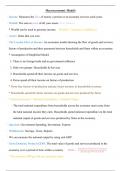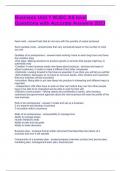Lecture notes
Full revision notes for Edexcel Economics A Paper 2 Macroeconomics
- Institution
- PEARSON (PEARSON)
These notes include all the topics you need to know for paper 2 Edexcel Economics A. It covers theme 2 and 4. For every topic it includes the diagrams, definitions of key concept and explanations. You can use these notes for your revision for exam in May as it covers everything.
[Show more]













